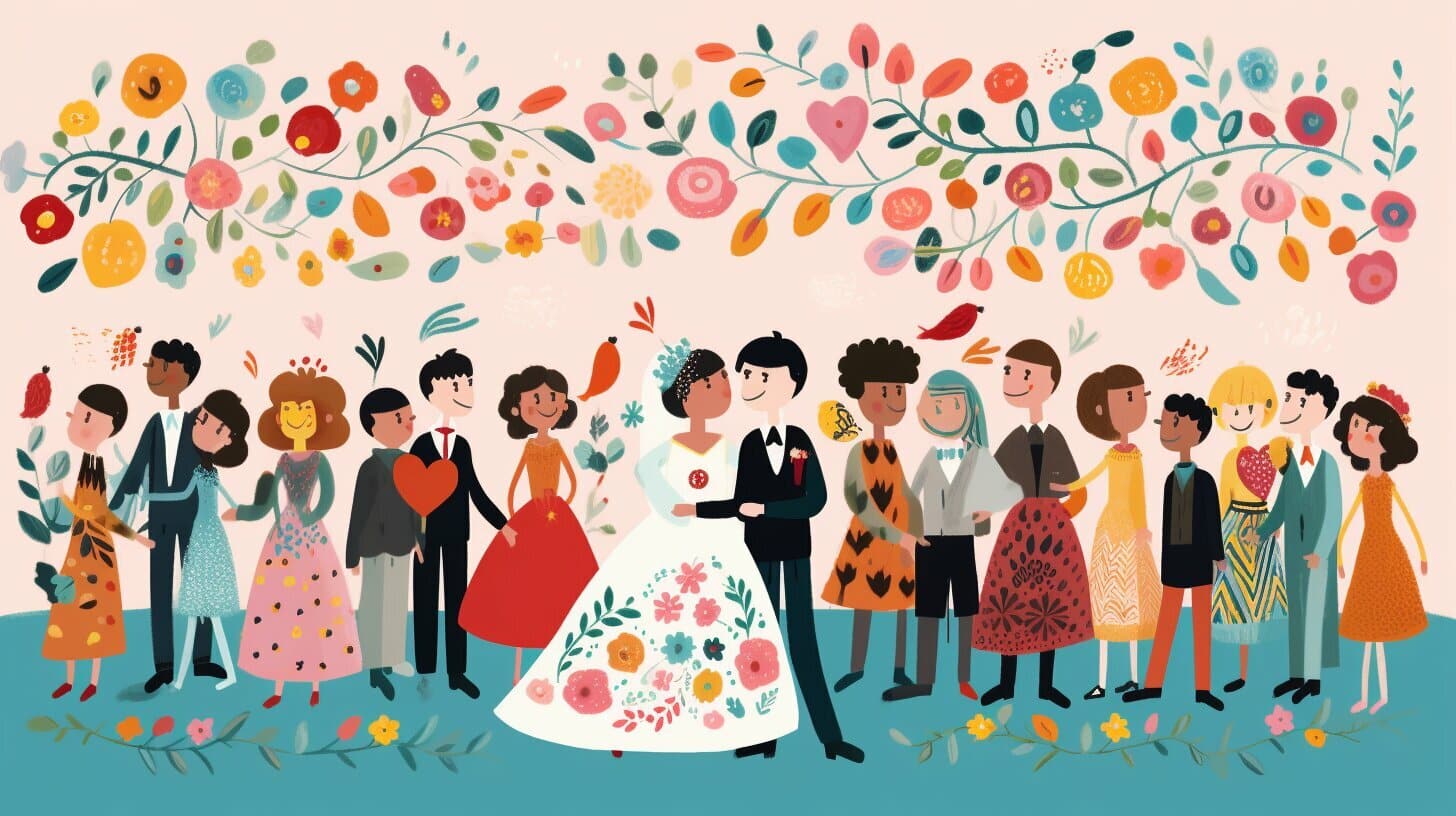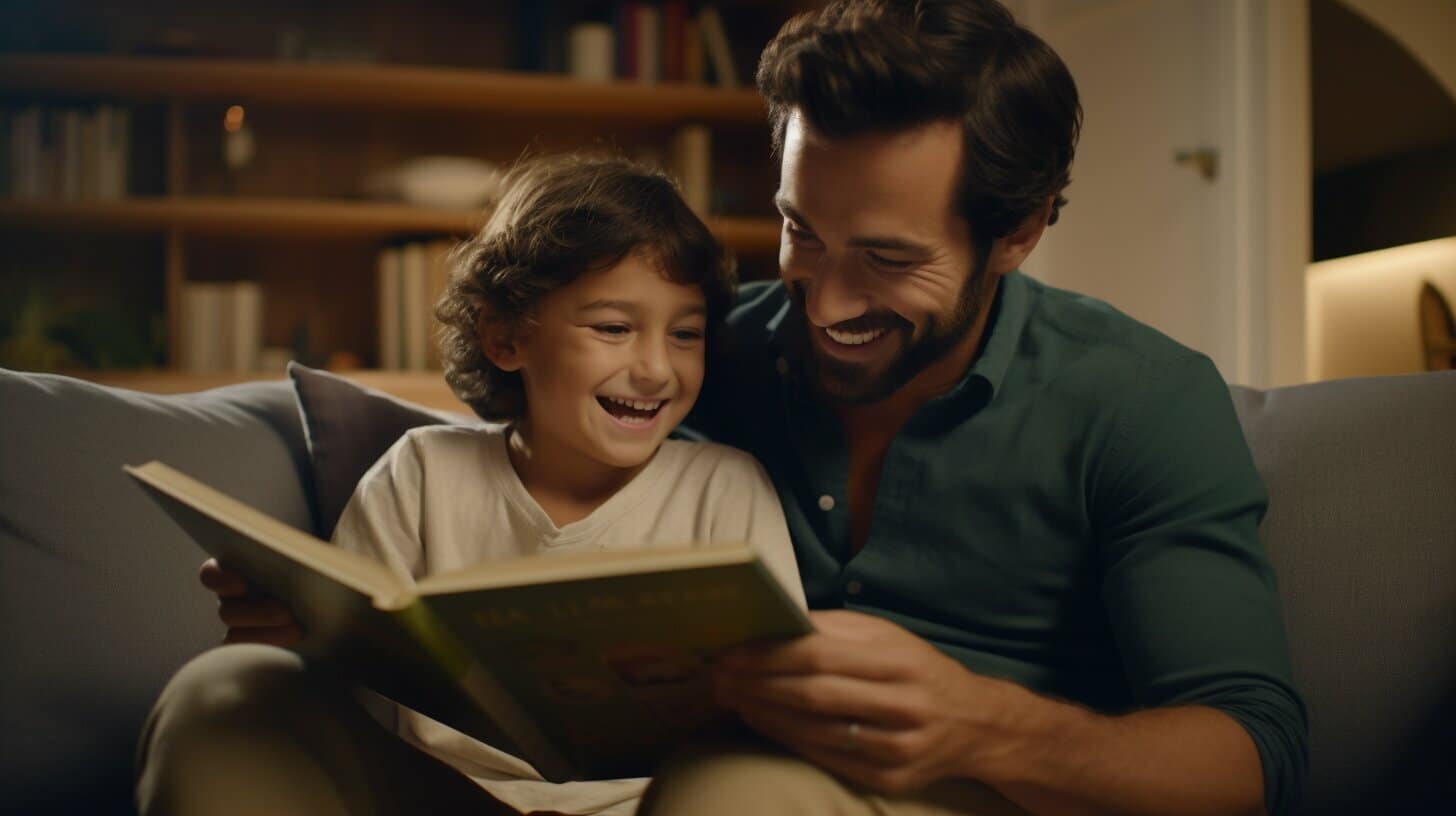Explaining the concept of marriage to your child can be a tricky task, but it’s an important one. As your child grows up, they will encounter the idea of marriage in various forms, whether it’s through books, movies, or their surroundings. It’s essential to lay the foundation for healthy relationships and family dynamics by discussing this topic with them early on.
But how do you broach the subject in a way that’s age-appropriate and understandable? In this section, we will provide you with tips and tricks for explaining marriage to your child, helping you navigate this essential conversation with ease.
Key Takeaways:
- Explaining the concept of marriage to a child is an important task that should be done early on.
- It’s essential to approach the topic in an age-appropriate and understandable way.
- In this section, we will provide tips and tricks for explaining marriage to your child.

Why It’s Important to Talk to Kids About Marriage
As a parent, you play a crucial role in shaping your child’s understanding of relationships and family dynamics. Talking about marriage with your child can help them develop a healthy view of love, commitment, and respect.
By discussing marriage, you can also address any misconceptions your child may have about the concept. For example, they may think that marriage is only between a man and a woman. By explaining different family structures, you can promote inclusivity and diversity in their worldview.
Additionally, talking about marriage with your child can prepare them for changes in their own family structure, such as a parent getting remarried or the arrival of a new sibling.
Overall, discussing marriage with your child can foster open communication, strengthen their relationships with family members, and promote healthy values. So don’t be afraid to start the conversation!
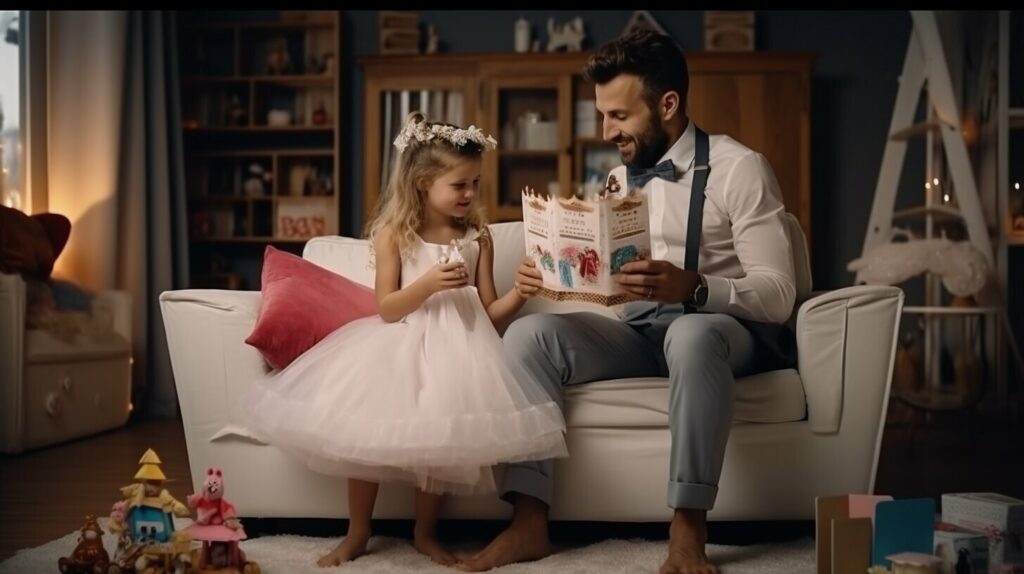
Understanding the Basics: What Is Marriage?
Explaining marriage to children can be a daunting task, but it doesn’t have to be. At its core, marriage is a commitment two adults make to love, support, and care for each other for the rest of their lives. To help your child understand this, you can use simple language and examples that they can relate to.
Marriage is a special bond that forms between two people who love and care for each other deeply. It’s like a promise to always be there for each other, to share their lives together, and to support each other through good times and bad. Just like how you promise to always love and take care of them, mommy and daddy also make the same promise to each other when they get married.
Marriage is often celebrated with a big party called a wedding, where family and friends come together to witness the happy couple exchange vows and rings. These symbols represent the love and commitment they have for each other. It’s important to remember that not everyone chooses to get married, but that doesn’t make their love any less special. Some people choose to show their commitment through other ways, like living together or having a commitment ceremony.
It’s natural for kids to have questions about marriage, so encourage them to ask anything they’re curious about. By explaining marriage in simple terms, you can help your child understand this important concept and lay the foundation for healthy relationships later in life.

Tailoring the Explanation to Your Child’s Age
When explaining the concept of marriage to your child, it’s crucial to consider their age and developmental stage. Young children may not understand complex ideas, while older children may have more questions and require more nuanced explanations.
For young children, keep the explanation simple and concrete. You can describe marriage as a special promise that two people make to each other to always love and take care of each other. You can use relatable examples, such as Mommy and Daddy, to help them understand.
For older children, you can discuss the legal and social aspects of marriage, emphasizing the importance of commitment and respect between two people. You can also explore different family structures and how they relate to marriage.
Remember, every child is unique, and there’s no one-size-fits-all approach to explaining marriage. Be patient, answer any questions they may have, and tailor your explanation to their level of understanding.

Using Relatable Examples and Stories
Children often learn best through relatable examples and stories. When explaining marriage to your child, consider using stories or examples that they can understand and relate to.
For younger children, you might use examples from their favorite storybooks or movies. For instance, you could explain that marriage is like when two characters in a story fall in love and decide to be together forever.
For older children, you might use examples from real-life situations or stories that they can relate to. You could explain that marriage is like when a friend’s parents are together and love each other very much.
Using relatable examples and stories can make the concept of marriage more engaging and understandable for children.

Image source: https://seowriting.ai/32_6.png
Addressing Different Family Structures
It is important to acknowledge and explain different family structures when discussing marriage with children. This promotes inclusivity, diversity, and helps children understand that there is no one-size-fits-all when it comes to families.
For example, you can explain to your child that some families have a mom and dad, while others have two moms or two dads. Some families may have only one parent, grandparents, or adopted siblings. Using real-life examples and emphasizing that all families are unique and special can help children understand and appreciate diversity.
It is also crucial to ensure that your child understands that all families, regardless of their structure, are equally deserving of love, respect, and happiness.
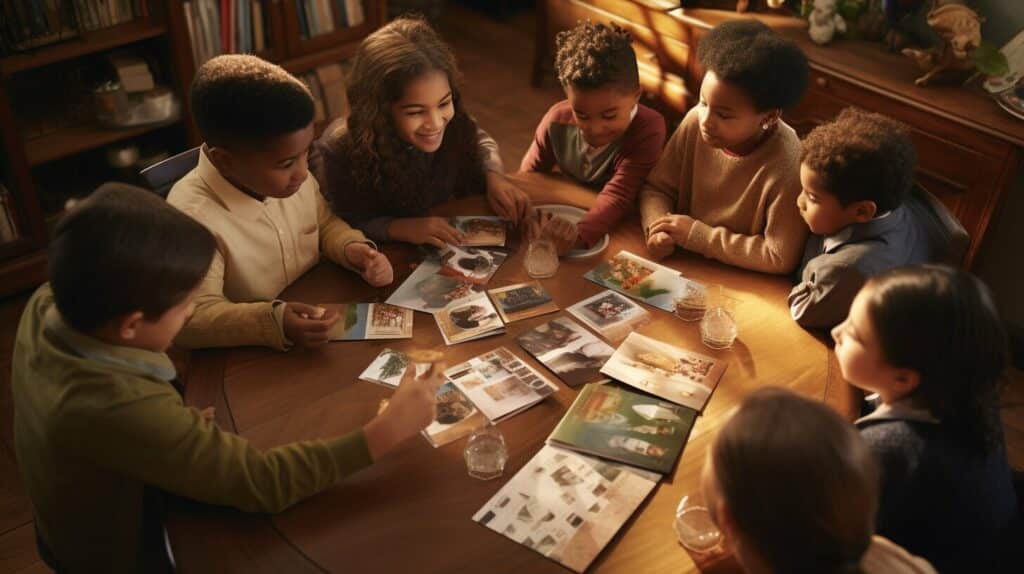
Answering Questions and Correcting Misconceptions
As you discuss marriage with your child, it is natural for them to have questions and misconceptions about the topic. It’s important to create a safe and open space for your child to ask questions and express their thoughts.
Listen to your child’s questions and answer them honestly, using age-appropriate language. Correct any misconceptions gently and respectfully, without dismissing their thoughts or feelings.
For example, if your child asks if marriage is only between a man and a woman, you can explain that while that may be a traditional view, many people today believe that marriage can be between two people of any gender. Use this as an opportunity to reinforce the importance of accepting and respecting all individuals and relationships.
Keep in mind that these conversations may not happen all at once. Your child’s questions and understanding of marriage may evolve over time, so be prepared to revisit the topic periodically and adjust your explanations as needed.
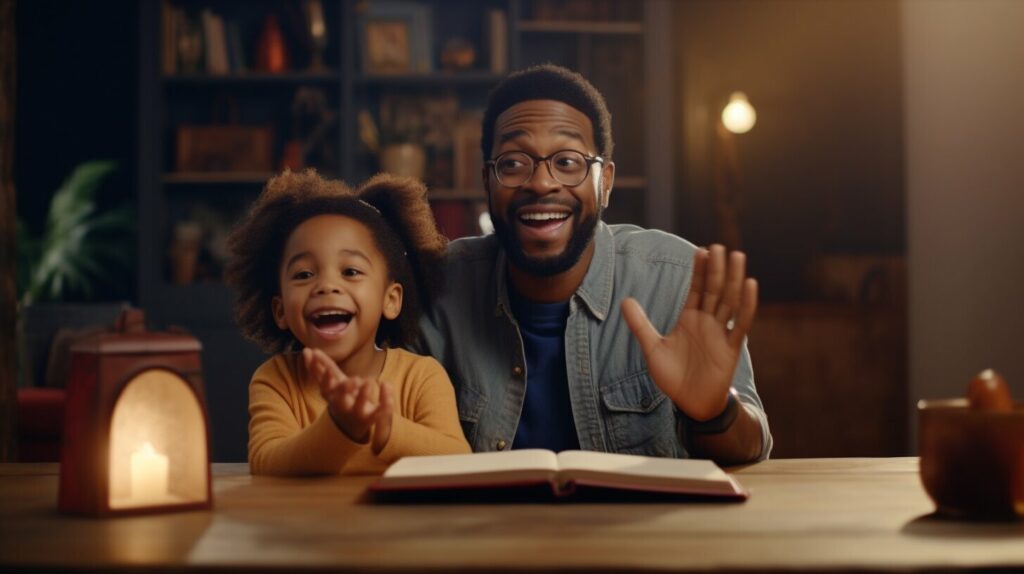
“Children are likely to live up to what you believe of them” – Lady Bird Johnson
Emphasizing Love, Respect, and Commitment
When discussing marriage with your child, it’s important to emphasize the values that form the foundation of a healthy relationship. Love, respect, and commitment are essential components of any successful marriage, and it’s crucial to help your child understand what they mean.
Love is more than just a feeling – it’s a choice to care for and support someone else. Explain to your child that love means treating your partner with kindness, empathy, and compassion, even when things are difficult.
Respect is about valuing your partner as an equal and recognizing their unique qualities and strengths. Encourage your child to appreciate the things that make their parents special and to show respect in both words and actions.
Commitment involves making a promise and sticking to it, even when things get tough. Help your child understand that marriage is a long-term commitment, and that both partners must be willing to work through challenges and support each other along the way.
By emphasizing these values, you can help your child form a healthy understanding of marriage and relationships. Remember to lead by example and demonstrate love, respect, and commitment in your own relationship as well.

Encouraging Open Conversation and Exploration
After explaining the concept of marriage to your child, it’s important to encourage open conversation and exploration. This means creating a safe and non-judgmental space for your child to ask questions and express their thoughts and feelings. Remember, children learn best through active exploration and inquiry.
Start by asking your child if they have any questions or if there’s anything they want to talk about regarding what you just discussed. Be patient and attentive, showing your child that their thoughts and feelings are important to you.
It’s also important to encourage your child to explore different perspectives and ideas. For example, you can ask your child how they think different family structures impact marriage or what they believe makes a strong, healthy relationship.
One way to encourage exploration is through books and media. There are many children’s books that address the topic of marriage in an age-appropriate way. For example, “And Tango Makes Three” by Justin Richardson and Peter Parnell is a heartwarming story about two male penguins who raise a chick together.
Remember to keep the conversation ongoing and adapt your approach as your child grows and develops. By encouraging open conversation and exploration, you’re helping your child develop a strong foundation of knowledge and understanding about relationships and family dynamics.

Conclusion
Congratulations! You’ve made it to the end of our guide on how to explain marriage to a child. We hope that you have found our tips and tricks helpful in preparing for this important conversation with your child.
Remember to approach the conversation with patience, understanding, and age-appropriate explanations. It’s important to create an open and safe space for your child to ask questions and explore their understanding of marriage, fostering their natural curiosity.
Always emphasize the values that form the foundation of a healthy relationship, such as love, respect, and commitment. And don’t forget to address any questions or misconceptions that may arise during the conversation, ensuring accurate information and fostering open communication.
We wish you the best of luck in talking to your child about marriage and hope that our guide has helped you feel more confident in doing so. Happy parenting!

How Can Parents Explain the Concept of Jobs to Their Child?
When it comes to explaining the concept of jobs to children, there are a few tips for parents to keep in mind. Firstly, start by discussing what jobs are and how they help people in different ways. Use examples that are relatable to the child’s own experiences. Secondly, highlight the importance of education and how it can open doors to various careers. Finally, encourage children to explore their interests and passions, emphasizing that jobs can be fun and fulfilling when doing something they love. By incorporating these tips for explaining jobs to children, parents can lay a strong foundation for their understanding of the working world.
FAQ
Q: How do I explain marriage to my child?
A: When explaining marriage to your child, it’s important to provide an age-appropriate and understandable explanation. Start by emphasizing the love and commitment between two people, and use relatable examples and stories to help them grasp the concept better.
Q: Why is it important to talk to kids about marriage?
A: Discussing marriage with children is important because it helps them understand relationships and family dynamics better. It can also promote values like love, respect, and commitment, while fostering open communication and inclusivity.
Q: What is marriage?
A: Marriage is a commitment between two people who love each other. It is a lifelong partnership that involves sharing life experiences, supporting each other, and building a family together.
Q: How can I tailor the explanation to my child’s age?
A: Consider your child’s age and developmental stage when discussing marriage. Use language and examples that they can understand and relate to. Adjust the level of detail and complexity accordingly.
Q: How can I use relatable examples and stories?
A: Using relatable examples and stories can make the concept of marriage more engaging and understandable for children. You can use examples from books, movies, or even from your own family and friends to help illustrate the meaning of marriage.
Q: How do I address different family structures?
A: It’s important to acknowledge and explain different family structures when talking about marriage with children. Teach them that families can come in various forms, and what matters most is the love and support within the family unit.
Q: How do I answer questions and correct misconceptions?
A: Encourage your child to ask questions and express any misconceptions they may have about marriage. Answer their questions honestly and provide accurate information. Correct any misconceptions gently and offer reassurance.
Q: Why should I emphasize love, respect, and commitment?
A: Love, respect, and commitment are fundamental values in a healthy relationship and marriage. By emphasizing these values, you are teaching your child the importance of treating others with kindness, understanding, and dedication.
Q: How do I encourage open conversation and exploration?
A: Create a safe and open space for your child to ask questions and explore their understanding of marriage. Encourage curiosity and support their exploration by listening actively and providing age-appropriate explanations.





